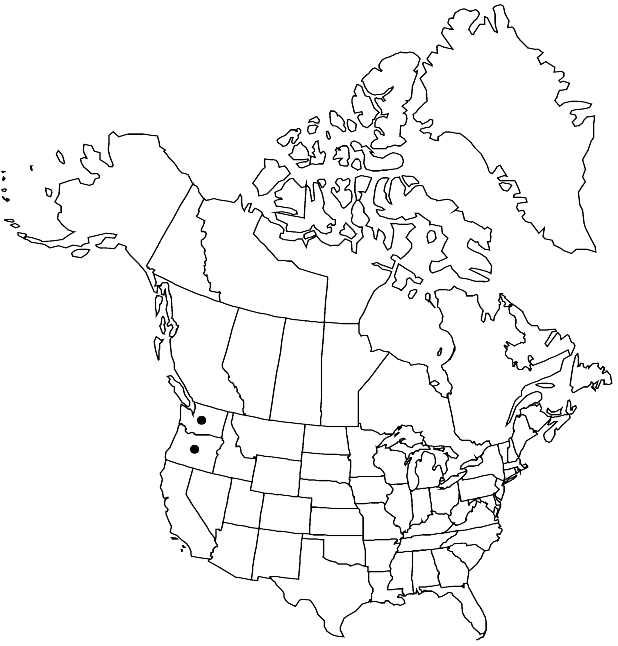Boechera cascadensis
Harvard Pap. Bot. 11: 260. 2007.
Perennials; long-lived; (cespitose); apomictic; caudex somewhat woody. Stems usually 1 per caudex branch, arising from center of rosette near ground surface, 0.5–2.2 dm, sparsely pubescent proximally, trichomes simple and short-stalked, 2- or 3-rayed, 0.1–0.2 mm, glabrous distally. Basal leaves: blade linear-oblanceolate, 0.7–2 mm wide, margins entire, ciliate proximally, trichomes to 0.4 mm, surfaces densely pubescent, trichomes short-stalked, (2- or) 3–6-rayed, 0.05–0.2(–0.3) mm. Cauline leaves: 4–6, not concealing stem; blade auricles 0.5–1 mm, surfaces of distalmost leaves glabrous. Racemes 3–11-flowered, unbranched. Fruiting pedicels ascending to divaricate-ascending, straight, 3–8 mm, glabrous. Flowers ascending at anthesis; sepals glabrous or sparsely pubescent; petals lavender, 5–6 × 1–1.7 mm, glabrous; pollen spheroid. Fruits ascending to divaricate-ascending, not appressed to rachis, not secund, straight, edges parallel, 3.5–6.2 cm × 1.2–1.5 mm; valves glabrous; ovules 58–80 per ovary; style 0.8–1.5 mm. Seeds uniseriate, 1.1–1.3 × 0.9–1 mm; wing continuous, 0.05–0.1 mm wide.
Phenology: Flowering Jun.
Habitat: Basaltic cliffs and rocky slopes in subalpine areas
Elevation: ca. 1900 m
Distribution

Oreg., Wash.
Discussion
Of conservation concern.
Morphological evidence suggests that Boechera cascadensis is an apomictic species that arose through hybridization between B. microphylla and B. paupercula (see M. D. Windham and I. A. Al-Shehbaz 2007 for detailed comparison). It is known from two collections: the type specimens from Kittitas County, Washington, and a more recent collection from Baker County, Oregon.
Selected References
None.